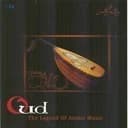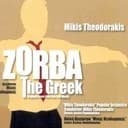Origins and Cultural Significance
The Double Harmonic Minor scale has deep roots in Middle Eastern, Mediterranean, and Eastern European musical traditions. In Greek Orthodox liturgical music, this scale (known as the Byzantine scale) has been used for centuries to create the haunting, spiritual quality characteristic of Byzantine chant. Turkish classical music employs this scale in various maqam systems, particularly in maqam Hicaz, while Arabic music theory recognizes it as one of the fundamental scalar structures. The scale also appears prominently in Klezmer music, where it's sometimes called the Freygish mode, and in Romani (Gypsy) musical traditions throughout Eastern Europe, hence its alternate name "Gypsy Minor scale." This cross-cultural presence demonstrates how the scale's unique intervallic structure resonates across diverse musical contexts.
The Two Augmented Second Intervals
What makes the Double Harmonic Minor scale truly distinctive is its two augmented second intervals—a feature rare among commonly used scales. The first augmented second occurs between the flattened second (G) and the major third (A♯), creating a dramatic three-semitone leap. The second augmented second appears between the flattened sixth (D) and the major seventh (E♯), mirroring that same tension in the upper portion of the scale. These wide intervals divide the scale into three distinct segments: a lower chromatic cluster (F♯-G), a major-like middle section (A♯-B-C♯), and an upper chromatic cluster (D-E♯-F♯). This symmetrical structure creates both the scale's exotic character and its inherent melodic tension, as these augmented intervals pull strongly toward resolution—the G wants to resolve down to F♯ while the A♯ pulls upward to B, and similarly D resolves down to C♯ while E♯ pulls up to the octave F♯.
Comparison to Harmonic Minor
Understanding the Double Harmonic Minor scale becomes clearer when compared to the more familiar F♯ Harmonic Minor scale. The harmonic minor scale (F♯, G♯, A, B, C♯, D, E♯, F♯) contains one augmented second between D and E♯, creating its characteristic exotic quality. The Double Harmonic Minor takes this concept further by lowering the second degree (G♯ becomes G) and raising the third degree (A becomes A♯), introducing a second augmented second interval in the lower tetrachord. While harmonic minor has a natural second and minor third, Double Harmonic Minor has a flattened second and major third, making it significantly more exotic and less connected to traditional major-minor tonality. This makes Double Harmonic Minor more challenging to use in Western harmonic contexts but incredibly effective for creating modal, non-functional harmonic progressions typical of Middle Eastern music.
Use in Different Musical Traditions
The Double Harmonic Minor scale appears under different names across various musical cultures, each tradition bringing unique performance practices and harmonic approaches. In Turkish makam music, this scale structure appears in Hicaz and related modes, where performers use microtonal inflections to add further nuance to the already exotic intervals. Greek rebetiko music employs the scale extensively, often over static or drone-based harmonies that emphasize the scale's modal qualities. Klezmer musicians use what they call the Freygish mode (equivalent to Double Harmonic Minor starting on E) to evoke traditional Jewish prayer modes and Eastern European folk melodies. Classical composers including Rimsky-Korsakov, Bartók, and Liszt incorporated the scale to suggest exotic or folk-influenced atmospheres. In contemporary music, the scale appears in metal (particularly symphonic and progressive metal), film scores depicting Middle Eastern settings, and jazz fusion exploring modal and ethnic influences.
Practical Applications and Improvisation Tips
When improvising with the F♯ Double Harmonic Minor scale, focus on emphasizing the characteristic augmented second intervals to bring out its exotic character. Start by practicing melodic phrases that highlight the G-A♯ and D-E♯ movements, as these define the scale's unique sound. The scale works effectively over sustained drone notes or static harmonies—try improvising over an F♯ pedal tone or alternating F♯ and B chords to create a modal, Eastern-influenced atmosphere. Avoid conventional major-minor chord progressions, as the scale's augmented intervals create voice-leading challenges; instead, use power chords, sus chords, or triads built on scale degrees that avoid the augmented seconds (like F♯ major, B minor, or D major). Phrygian-dominant harmony pairs naturally with this scale—the A♯ Phrygian Dominant scale (A♯, B, C𝄪, D♯, E♯, F♯, G♯, A♯) shares many notes and can create interesting modal interchange possibilities. For melodic development, try answering phrases built on the lower augmented second (G-A♯) with phrases built on the upper one (D-E♯) to create symmetrical, balanced melodies. Connecting to related scales like F♯ Harmonic Minor or exploring the parallel F♯ Natural Minor can help contextualize the Double Harmonic Minor's unique qualities and expand your improvisational palette.





